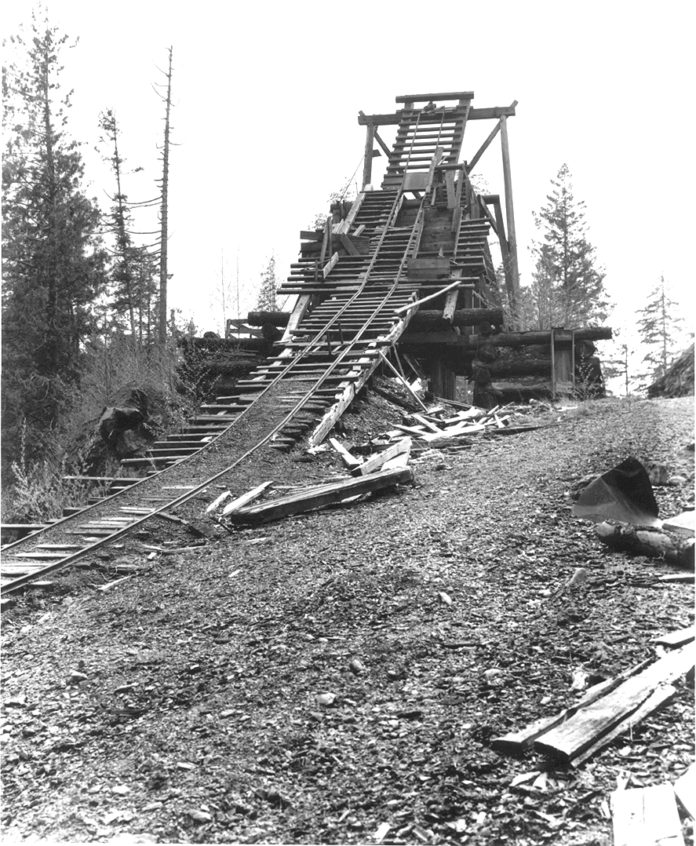If you were a coal miner in the first half of the 20th century, a scene like this would have been common. Shown here is Palmer Coking Coal Co.’s tipple located in the Green River Gorge on the west side of the river. A tipple is a structure used at a mine to load out extracted coal. The actual No.12 Franklin coal mine was located on the east side of the river. The mine’s underground workings extended 3,500 feet east, both under and beyond the Enumclaw-Franklin Road. The portal was connected to the tipple by a timber bridge and supporting rail tracks. A cable hoist pulled loaded coal cars from the mouth of the mine, across the river, then once on the west side, around a corner and up a hill to where the tipple and hoist room were located. Upon reaching the top of the steep tipple, a mechanical lever tripped a tailgate on the rail car allowing coal to fall into a bunker below.
Dump trucks regularly hauled the raw coal to Black Diamond for cleaning and processing into various sizes for different markets. At the time, the biggest consumers of coal from Palmer’s Franklin No. 12 mine were state institutions, such as the Shelton Correction Center and Monroe Reformatory. Frank Guidetti, an amateur Black Diamond photographer snapped this photo on April 19, 1959. When the photo was taken the mine was no longer producing coal. About the same time, the No. 12 mine was being readied by volunteer civil defense workers as a radiation fallout shelter in case of nuclear war, the result of Cold War tensions between the U.S. and U.S.S.R. However, the mine flooded on Nov. 22, 1959 and was never reopened. Next week, more about Mrs. Ronald Frazier, who spearheaded those civil defense efforts.







